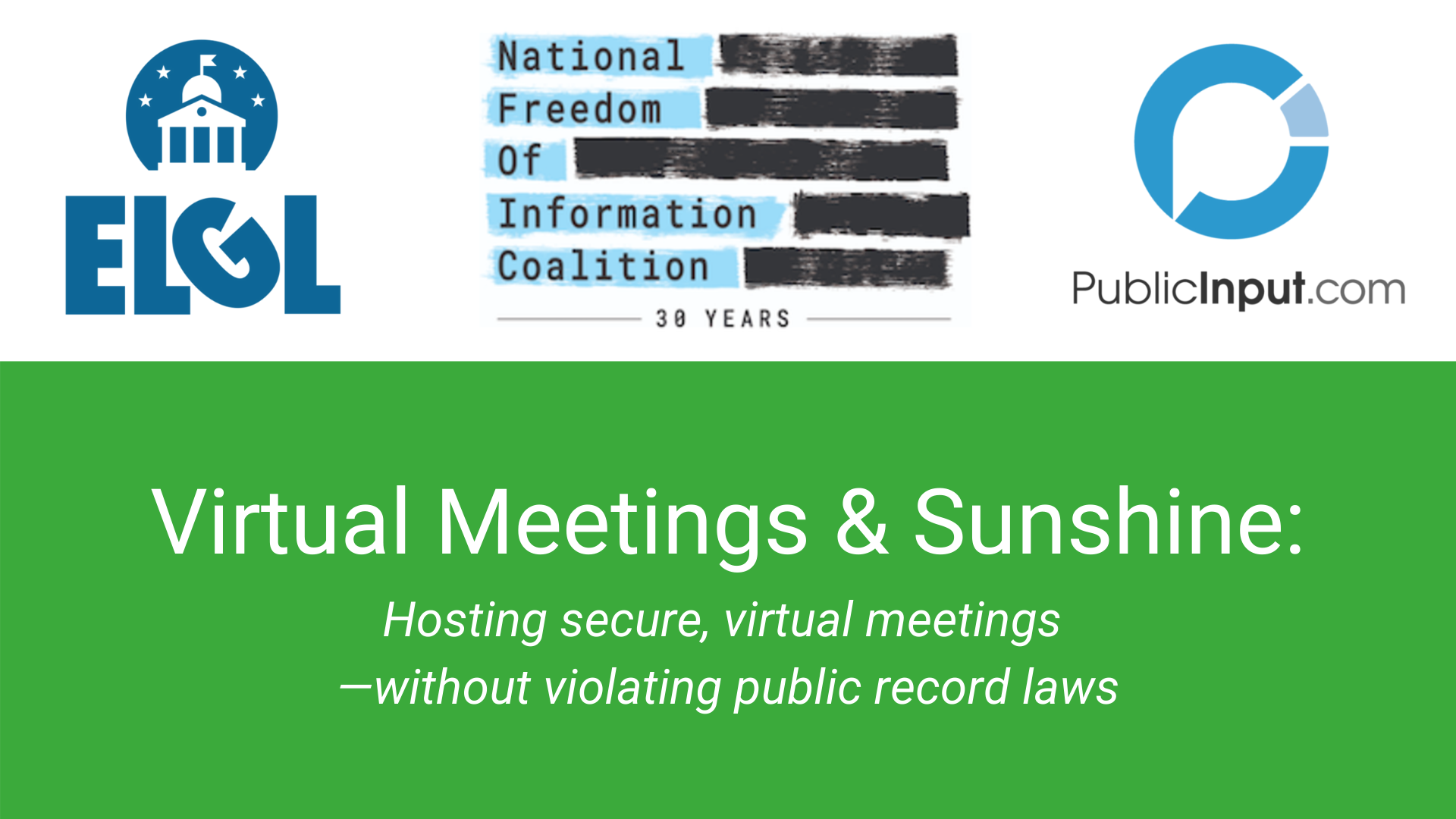
Miss the recent webinar with the National Freedom of Information Coalition (NFOIC) and PublicInput.com, or just want a review? Here’s what we discussed on the recent “Virtual Meetings & Sunshine” webinar on April 28th.
Hosting Virtual Meetings that are Secure, Accessible, and Compliant with Public Records Laws
The challenges of virtual public meetings
Adjusting to an all-virtual public engagement landscape means new opportunities to reach and engage the public, but also new challenges. As some organizations turned to social media livestreaming and off-the-shelf video conferencing tools, headlines across the country told stories of many others who simply deferring and cancelled meetings altogether. Those forward-thinking groups who did move quickly to take their meetings online were often rewarded with “bombed” meetings derailed by stolen mics, vulgar comments, or sometimes worse.
States give the green light — reinventing vs. replicating public meetings
As the realization set in that this crisis would not be short-lived, states issued various suspensions of their public meeting laws, though many tenants of existing Sunshine Laws remain in place. These statements placed the onus on organizations to not reinvent what a public meeting is, but rather replicate a public meeting, virtually. Here’s Dan Bevarly discussing some trends he’s seen and what NFOIC is asking of organizations during this time:
Addressing the two big challenges: security and equity
While off-the-shelf conferencing tools allow government officials to present materials and mimic personal interactions, they present security issues when inviting the public to participate. In addition, conferencing tools also require downloading or signing into an application, reliable Internet, and often access to a personal computer. This creates a high barrier for public participation, especially in our under-represented populations.
When the FBI stepped in to warn against open meetings, and even sharing closed meeting invites with the public, public agencies were forced to sacrifice transparency and access for the sake of security.
How can we avoid ‘hijacking’ while maintaining Sunshine best practices and equitable participation?
Government organizations are adopting new technology that creates a safe “boardroom” for their presenters while projecting those meetings publicly so that residents can simply navigate to a website or call in to attend. To ensure equity and adhere to various Sunshine Laws, these groups are making available multiple and redundant methods to participate, including texting, commenting online, calling in to leave a voicemail, or even joining a speaker queue to interact directly.
Adding another layer to the solution is an important concern of the NFOIC in the verification and attribution of public comments, and their availability in the public record. These multifaceted challenges mean that IT teams are being tasked with piecing together solutions and even running these meetings as they occur.
You can read more about how technology is being applied to ease this burden over at PublicInput.com.
The upside: Now is the opportunity for organizations to learn and try new things
We are seeing residents everywhere want to engage now more than in recent history, and with virtual efforts lowering the barriers, communities are making it happen. From the Davenport Institute at Pepperdine University to the National Freedom of Information Coalition, thought leaders in this space are telling us to go for it! The biggest mistake we can make is to miss this opportunity to test, iterate, and advance how we reach and engage every corner of the community. With the right tools and strategies, organizations can look beyond just virtual meetings to a unified approach that brings online and offline tactics together, building relationships that last long after we overcome this current crisis.
Watch the full webinar and download slides here.
